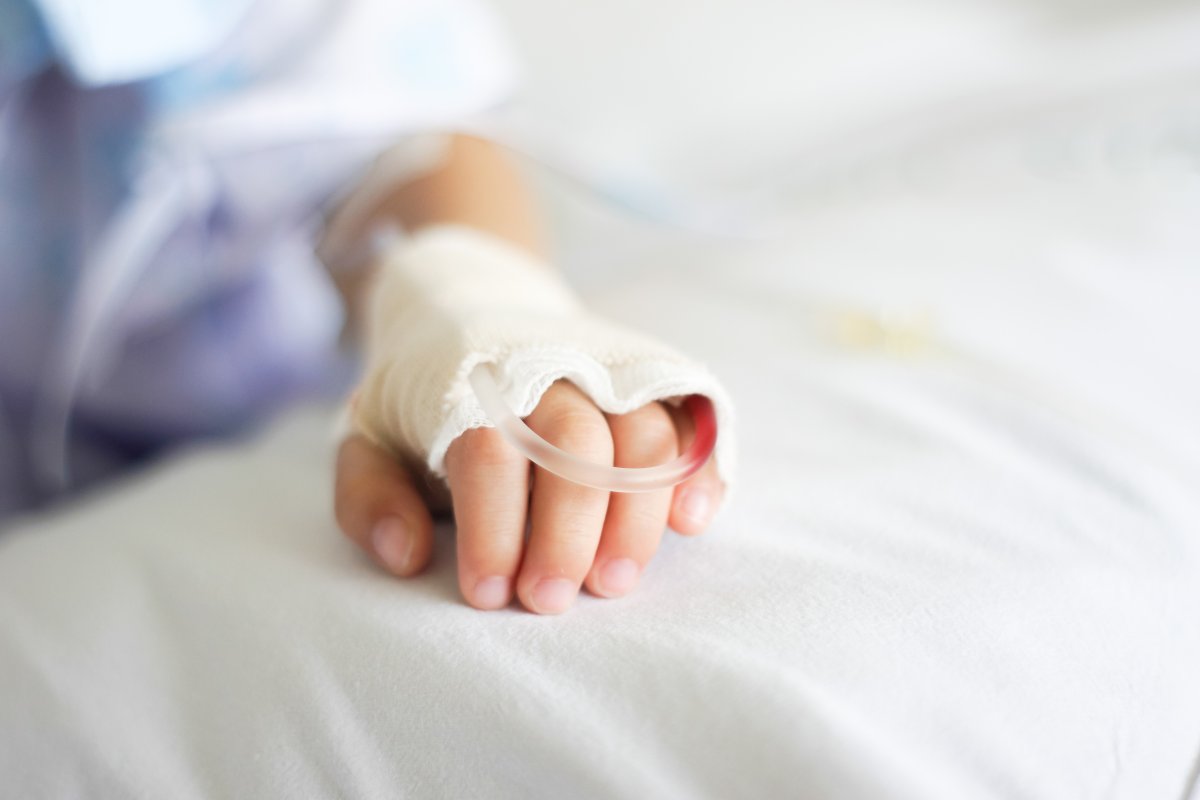A hospital in Montreal has used “heated chemotherapy” to attack the cancer of a three-year-old boy in what is believed to be one of the first times in Canada the treatment was used on such a young patient.

“Clearly, we were faced with a situation that required a little more thought, and perhaps even to use different and complementary approaches,” CHU Ste-Justine pediatric surgeon Nelson Piché told The Canadian Press.
The child had been diagnosed with sarcoma, which is a type of cancer formed in the soft tissues of the body. Surgeons had already operated on the boy three times to try to remove the cancer from his abdomen.
When the cancer returned again, Piché and his colleagues turned to heated chemotherapy. While the technique is growing in popularity, he believes it has never been used on such a young patient in Canada.
READ MORE: 3-year-old boy fighting cancer sees dream of attending a Habs Stanley Cup game come true
The doctors began by removing as many cancerous cells as possible during a surgery on June 18 that took nearly four hours. The problem was that it’s nearly impossible to verify that all the cancer is gone — which is where heated chemotherapy came in.
“It’s as if this chemo penetrates into all the little cells on the surface of everything in the belly so that, if there are cancer cells, they can be eliminated by chemotherapy,” Piché said.
Instead of being injected into the veins like traditional treatment, the chemotherapy is heated to about 41 degrees Celsius and circulated directly on the organs of the abdominal cavity, reaching the small groups of cancer cells that could metastasize in the future.

Get weekly health news
The chemotherapy enters the abdomen through two tubes and comes out through two others, ensuring that it’s always correctly heated and passes over all the organs.
The heat means the liquid penetrates deeper into the tissues — two or 2.5 millimetres instead of one or 1.5. It’s a seemingly small difference, but one that matters when it comes to destroying as many cancer cells as possible.
“The advantage of putting the chemotherapy in the abdomen, and not in the veins, is that it goes directly to where we think the risk of recurrence is highest,” Piché said.
The technique makes it possible to use doses of chemotherapy that are more potent than what would otherwise be injected. It also helps to avoid — or at least decrease — most of the unwanted side-effects associated with chemotherapy.

The mechanism that gives heated chemotherapy its effectiveness isn’t very well understood, but Piche offers an interesting anecdote.
“When you want to increase the permeability of the skin, when you want to open the pores of the skin, you put on hot compresses and that allows you to penetrate a little more,” he said. “I would tell you that it is somewhat the same principle. ”
Heated chemotherapy remains relatively new, even as it’s being used more often. Dr. Pierre Dubé of Maisonneuve-Rosemont hospital, a mentor of Piché ‘s, was one of the early pioneers in Montreal. During the operation on the three-year-old, Piché was aided by a loan of equipment from Maisonneuve-Rosemont and the help of an American specialist.
However, the stars needed to align before a first attempt was made on a child.
“We’ve been ready for seven years, but it was the first time a patient met all the criteria: a tumour for which we knew there was a chemotherapy we could heat and that we knew is effective … and the tumour can’t have gone elsewhere in the body,” Piché said.
While cancer is the second-biggest cause of pediatric death, after trauma, pediatric tumours fortunately remain rare. Therefore, there are fewer opportunities to use heated chemotherapy in pediatrics, especially since it isn’t approved for all types of cancer and, even then, not on all tumours.
READ MORE: Montreal toddler and his up-beat visit from Metallica drummer Lars Ulrich
The child is said to be doing well and recovering from the operation, but still has a long road ahead. He’ll continue to be treated at Ste-Justine hospital with conventional chemotherapy as well as with a treatment developed especially for him, and will undergo a number of tests to ensure the cancer doesn’t return. There has also been a research protocol created, with him as the only patient.
If ever it becomes necessary, another round of heated chemotherapy could be possible, Piché says.
“Having done it will certainly facilitate the future usage of the technique for other patients,” he said. “We still have to choose our patients very selectively.”
Even if relatively few patients will benefit from the therapy in the coming years, what is important is that doctors can now offer to children for whom other methods aren’t working a technique that has been proven effective in adults, he said in a followup email.
“In other words, even if the number is low, the value is immense for those who can benefit,” he wrote.







Comments